Can Lonzo Ball's Jumper Make It in the NBA?

The dirt hill had to go first. The mound of rolling terrain was a waste of real estate, let alone apt for a mad scientist's backyard basketball laboratory. A crew excavated the yard next, clearing a 30-square-foot pit for the eight-foot tall retention wall. Cinderblocks coated the hole to support the neighboring house and the most well-known Southern California hoop on the Internet. They tore down the wooden fence. In its place, white, palatial block walls engulfed the plot at the edge of the cul de sac. Finally, a cool, grey concrete veiled the yard with a finishing coat, all for the exclusive low price of $10,000. "It would be more,” LaVar Ball says, beaming, quick to admit immigrant workers inexpensively completed the task.
LaVar purchased the Chino Hills property in 1996, viewing the land as more DIY-project than home. He plunged pull-up, tricep-dip and push-up bars into the earth alongside the house the first week he and his wife, Tina, moved in. The backyard overhaul commenced shortly after, and his oldest son Lonzo arrived as well. LiAngelo entered the world a year later. LaMelo was born practically in concert with the walls’ erection. By 2002, LaVar watched a second set of landscapers install their shimmering pool while cradling his third baby. He topped the metal rod rooted into the retention wall with a regulation-sized basket later that year. The hoop wasn’t complete without a double-rim. “Harder to shoot on,” he says. The jacuzzi would allow for post-workout recovery and the pool provided space for water-resistance training if his sons ever sprained an ankle. “Anything they need is back here.”
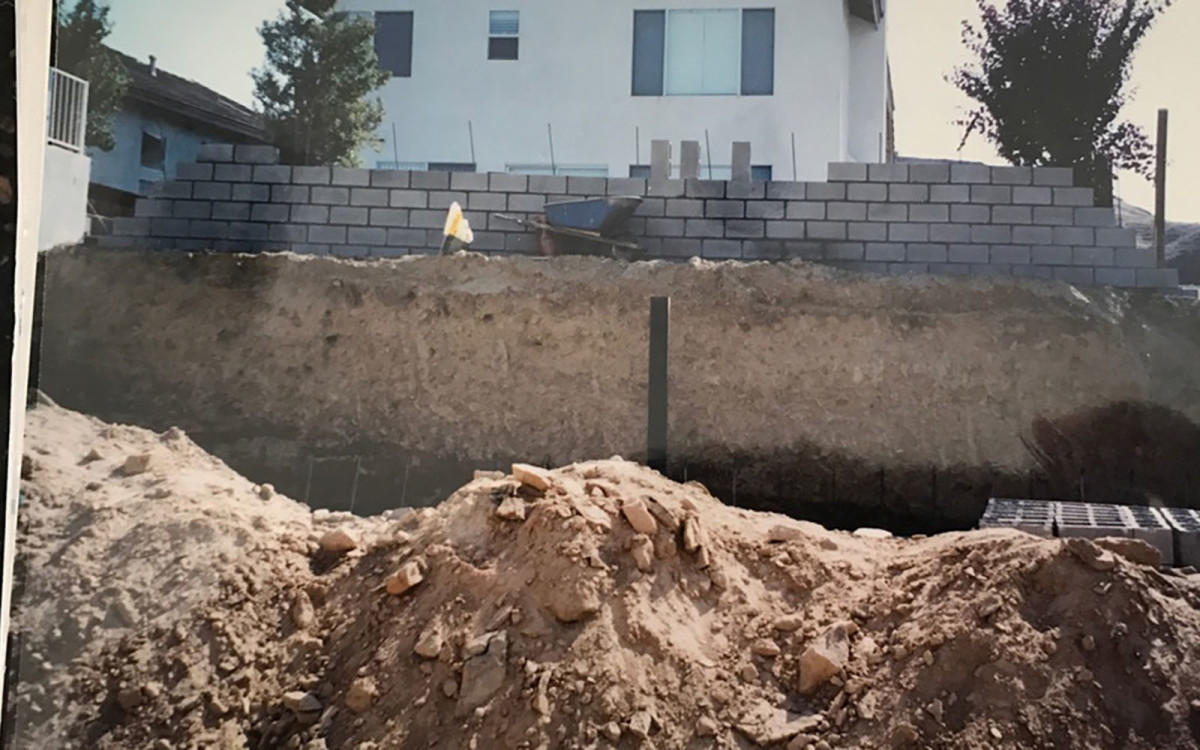
He always felt he would have three, strapping boys; equal parts assured prophet and father. That’s why he ripped out the fridge community developers originally installed in favor of an industrial-sized unit practically the size of a compact meat locker. He sealed the balcony gap at the peak of the staircase and turned the space into a home theater for film study. LaVar's house morphed into a roundball compound, mixing and matching secret ingredients with trademarked catch phrases and where his three boys experimented with the limits of the jump shot further than anyone in history.
Jump shooting Darwinism may finally culminate with Lonzo, his highly unorthodox mechanics and audacious range reaching the NBA stage. But can his funky form first translate to the next level?
Eighty years ago and seven miles south of Hillsdale, Wy., Bud Sailors built a backboard and fastened it to the wooden windmill behind his family’s farm. At 6’5”, Bud sprouted faster than his mother’s potato crop. The high school star dominated his pubescent brother Kenny when they played one-on-one under the makeshift hoop.
In contest, Bud swatted practically all of his shorter brother’s attempts. Set shots ruled the 1930s. Shooters’ feet never left the ground. Players would raise the ball from their waist to their chest before launching it. The release incorporated flicking both wrists upward, oftentimes complimented by scuffing one’s off-foot backwards. “Like a dog when he finishes taking a s--t,” says John Christgau, author of The Origins of the Jump Shot. So when Kenny charged at Bud one afternoon, stopped dead in the dirt, sprung into the air, and snapped the ball towards the windmill, big brother stood helpless and befuddled.
Pinpointing the true pioneer of the jump shot is a fool’s errand. Basketball permeated the country far faster than the game developed. Backboards were only invented to prevent spectators seated in the balcony above the hoop from goaltending. But when Kenny’s Wyoming Cowboys challenged Long Island University at Madison Square Garden on Jan. 3, 1946, a true inflection point of jump shooting chronology emerges. As Sailors skied toward the rafters to give Wyoming a 21-16 lead, camera bulbs flashed and basketball history started shifting by the time his feet returned to the hardwood.
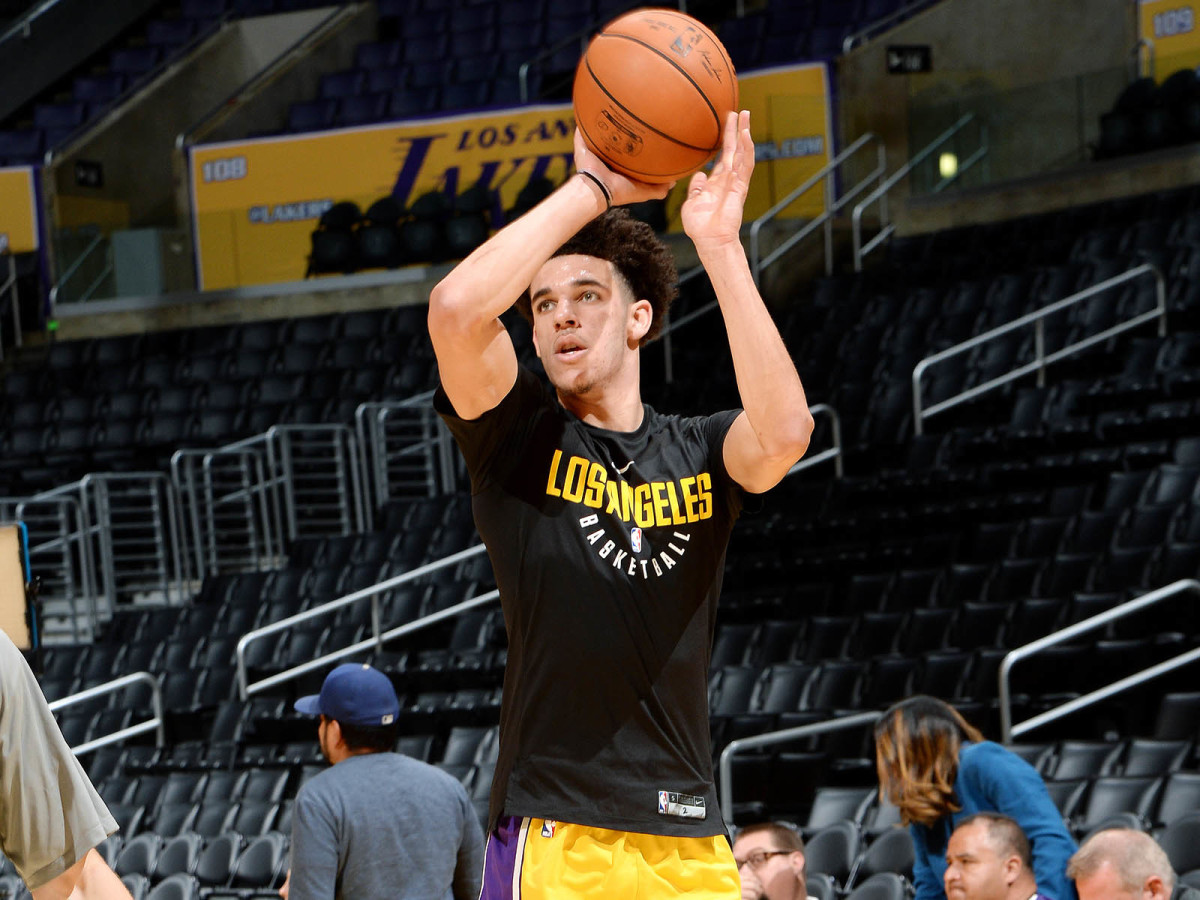
LIFE Magazine captured Sailors’ aerial feat, spreading a newfound scoring weapon across the land. The running one-hander, popularized by Stanford’s Hank Luisetti in the 1930s, strictly preceded today’s one-handed floater. Hook shots had already been a staple of the game for years. Sailors’ form—right hand and elbow directly underneath the ball, guide hand caressing the other side of the leather, shoulders squared to the target, maintaining possession before shooting at the apex of the jump—was the first documented modern jump shot on record. “He probably has the greatest contribution in the history of basketball,” says Larry Shyatt, former Wyoming head coach and current Dallas Mavericks assistant.
As the NBA solidified in 1949—and continuing throughout the 1960s—offensive actions orbited the post. That style continued into the late 1970s. “You were looking for the layup first and the post-up second and then you ran your offense,” says Hall of Famer Julius Erving. When inside looks weren’t available, the ball would swing back out to the foul line, each player utilizing iterations of Sailors’ novel mechanics.
Meet Lonzo Ball's Agent ... (No, It's Not LaVar)
NBA players evolved into efficient 15-foot jump shooters. The BEEF acronym—balance, eyes, elbow and follow through—became sacred. And next, all you needed was the innate touch basketball required. Then in 1979, the league painted a semi circle around the key, 23 feet and 9 inches from the rim. “The three-point shot has changed everything,” Hall of Famer Don Nelson says.
A year after the three-point line’s inception, professor Peter Brancazio was trapped in a Brooklyn College physics department meeting instead of joining his usual pickup run. So he began drawing projectile trajectories of basketballs soaring towards the rim. “The question hit me, is there a way to mathematically calculate the best parabola?” Brancazio says.
Optimizing a jump shot through kinetics and Newtonian mechanics incorporates several factors, dependent upon each shooter’s launching height. Floating a shot with a superlative angle, speed and ideal revolution as the ball enters the rim will maximize a shot’s margin for error. To calculate those numbers, Brancazio translated his doodles into the equations of motion within gravitational fields. He determined one can find his optimal launch angle by computing 45 degrees—the optimum entry angle if a ball was shot from a height equal with the rim—plus half the angle whose tangent is the vertical distance to the basket divided by the horizontal distance. It’s high school trigonometry.
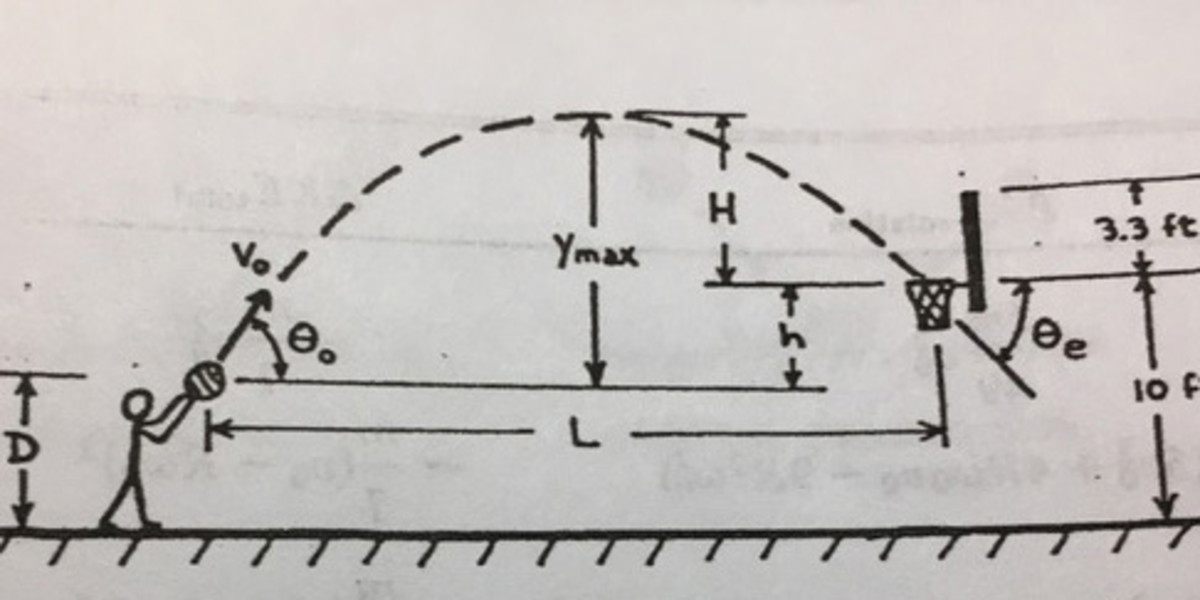
In 2003, NC State Mechanical and Aerospace Engineering professor Larry Silverberg began logging millions of Monte computer simulations—a wide range of computedalgorithms, when randomly repeated, obtain numerical results—calculating the standard deviation of hypothetical shooters’ outcomes. Silverberg and his colleague, Chau Tran, determined the optimal number of revolutions for a shot is created by 3 hertz of backspin, and pinpointed the sweet spot: 2.8 inches past the center of the rim, where missing both short and long still provides high probability to score.
Today, Noah Basketball has essentially morphed that science into a tangible product. Its sensor, positioned 13 feet above the rim, live-tracks a shooter’s every heave, measuring the entry angle and locating the exact point the ball passes through the rim. The system announces the angle aloud—”45! … 43! … 44!”—while it plots those finishing locales on an interactive shot chart. Noah’s data, polling millions of real-time shots, corroborates the 45-degree optimum entry angle Brancazio incorporated into his calculations and nearly mirrors Silverberg’s entry point, having found two inches behind the exact center of the basket as the true bullseye. “It’s where all the great shooters shoot it,” says John Carter, the company’s CEO. Ten NBA teams, including the Clippers, Warriors, Jazz, Heat and Mavericks, utilize the system.
Rick Barry’s oldest son, Scooter, has developed the SOLIDshot shooting sleeve, embedding LED sensors on the wrist, elbow and bicep. Its mobile app provides instantaneous feedback on the angles of a shooter’s elbow, wrist snap, palm twist and more upon release. Once a shooter locks in the ideal metrics for his shot, it drills the player on his own unique form. “How to make people more proficient shooters is not necessarily to get everyone to shoot the same way but to get everyone to optimize their shooting form based on their flexibility, range of motion, muscle structure,” Scooter says. Physics has spoken: If you can master a release that creates an optimal path for the ball to enter the hoop, your windup and mechanics do not matter.
Reggie Miller discovered his unorthodox mechanics in his family’s Riverside, Calif., backyard, flinging shots over his older brother Darrell and sister Cheryl. He knocked knees on his gather and used his left thumb to help flick the ball towards the basket. “It sounds like I am getting fouled,” Miller says. A 10-year-old Ray Allen developed his fluid form on Edwards Air Force Base, where local coaches recorded his free throw with a video camera and the rest was, quite literally, history. Tim Legler, sixth all-time in NBA three-point percentage, simply mirrored the mechanics he watched pros use on TV. “Shooting is like your fingerprints,” Miller says.
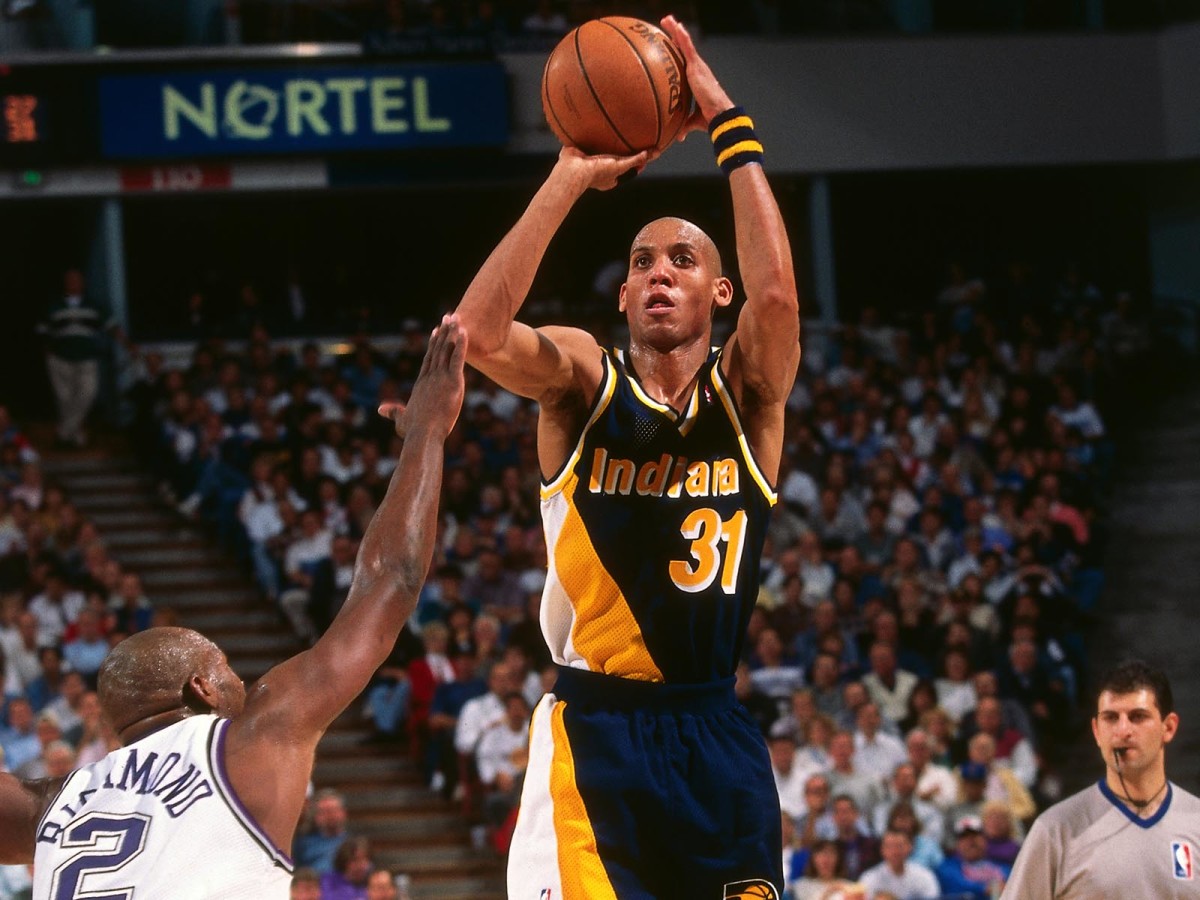
Spurs shooting czar Chip Engelland actually dissects his players' fingers. Index, ring and middle finger lengths can drastically vary. “Kind of like ear lobes,” Engelland says. Coaches now recognize biometrics, appreciating how Shawn Marion’s flick shot evolved after he shattered his right wrist fighting in a high school pickup game. He played the next day, and his famous quirky form manifested. “You can’t bend your wrist fully with a soft cast on,” Marion says. “It just happened.” Engelland then channels that hand information, like Kawhi Leonard’s massive mitts, to determine a player’s optimum grip and release point. He used Kobe Bryant’s release as a model for Leonard in 2011, a blueprint that had recently worked for Richard Jefferson.
Many coaches now spotlight the exact finger players release the ball with. “Getting the release right means that you are applying equal force to the exact center of the basketball,” says Bob Fisher, the Guinness World Record free throw shooter. Coaches used to universally teach a dual, middle-and-index-finger release at the ball’s center of gravity. Engelland and other leaders adjust that launch finger dependent on the person. The most popular modern method focuses on the middle finger, where the thumb and pinkie slide the ball like a funnel before it’s released.
Can the Adidas 'Family' Convince Lonzo Ball to Wear the Three Stripes?
Players have advanced past the traditional L-shaped mechanics—where your forearm is positioned precisely perpendicular to the floor—as well. Slow down film, and you’ll find snipers like Curry, Damian Lillard and Kyrie Irving snap the ball practically onto their shoulder, where their arm forms into more of a V, loading up to fire like a slingshot from well-past the NBA three-point line. “You have a relationship with your shot much like you would with a significant other,” says Hawks shooting coach Ben Sullivan. “You gotta nurture it and take care of it and give it attention and make sure it gets what it needs.” He’s noticed a rising trend of shooters tilting their feet rather than squaring up the basket. Footwork has always been integral, now it’s grown individualized. “Making shots and being in game situations, that’s all lower body,” Allen says.
Former Raptors GM Rob Babcock identified players’ vision. During a decade with the Timberwolves, Babcock witnessed Kevin Martin’s wonky mechanics, derived from his being left-eye dominant. It’s a surprisingly common trend amongst righties. “They bring the ball right into the front of their left eye, because that’s what they’re lining it up with,” Babcock says. Martin wielded his form into a career 38.4% outside shooting clip. Master the craft, like Martin and Lonzo today, and you can hear that splash.
The Ball boys began shooting from above their heads as two-year-olds, targeting a Fisher Price hoop. If LaVar could ingrain that crucial starting point mere months after their first steps, he would eliminate the waist-release that later plagues so many youngsters against longer shot blockers. A one-year-old Lonzo was already shooting when LiAngelo was born. LaMelo arrived four years later as the family broke ground to imbed the pool and LaVar’s mega-fridge began feeding the trio by the plateful, although meals quickly presented a problem. “At the breakfast table, you know how most people are right handed?” LaMelo explains. He and LiAngelo kept wreaking havoc with their left elbows, prompting LaVar to convert his two younger boys into righties.
When Lonzo was nine, the pull-up bar began to wobble after years of reps. So LaVar shuttled the boys to Home Depot, where they purchased 50-pound bags of cement mix and lugged them into the backyard. LaVar stationed three buckets and poured water inside. “The boys are getting s--t all over their shoes and hands trying to stir that s--t with a wooden thing,” he says. It took three hours of strenuous whisking to create the concrete. “They’ve been hooping ever since,” he smiles. “They don’t want to do that manual labor.”
As an eight-year-old, LiAngelo would cock the ball over his head like he was inbounding in soccer. “It would spin sideways like a tornado and drop in,” LaVar says. LaMelo would nearly balance the ball on his skull before chucking. It was the only way the younger Balls could shoot over longer, older players when LaVar employed them on Lonzo’s Big Baller AAU squads.
He guided LiAngelo, now enrolled at UCLA, to develop a textbook jump shot the summer before his freshman year of high school. After two days of growing pains in the backyard, he was shooting with a picturesque release. He hops into each shot, generating power to launch from that familial hallmark, unconscionable distance. As he bends his knees, he dips the ball below his waist before raising it eye level, another method of loading up for maximum range. “I can get it off quick, too,” LiAngelo says.
And then there’s LaMelo, who recently withdrew from Chino Hills High. The youngest’s famous YouTube highlights include a 92-point rendition from this past season and casually draining an in-game half-court heave. He launches from behind the timeline three or four times per contest. “If I’m open, yea, I’m going to shoot it,” he says nonchalantly. He loads the ball in front of his nose, both elbows chicken-winging out to his side. It’s a right-handed release, but his left thumb and index finger also push his shots towards the hoop, similar to Miller. LaMelo often kicks his right foot out and across his body as well. “It just happens,” he says. “It feels normal.”
“Perfect your shot, whatever it is,” LaVar says. “It may not look the same, but as long as you put the ball in that hole...”
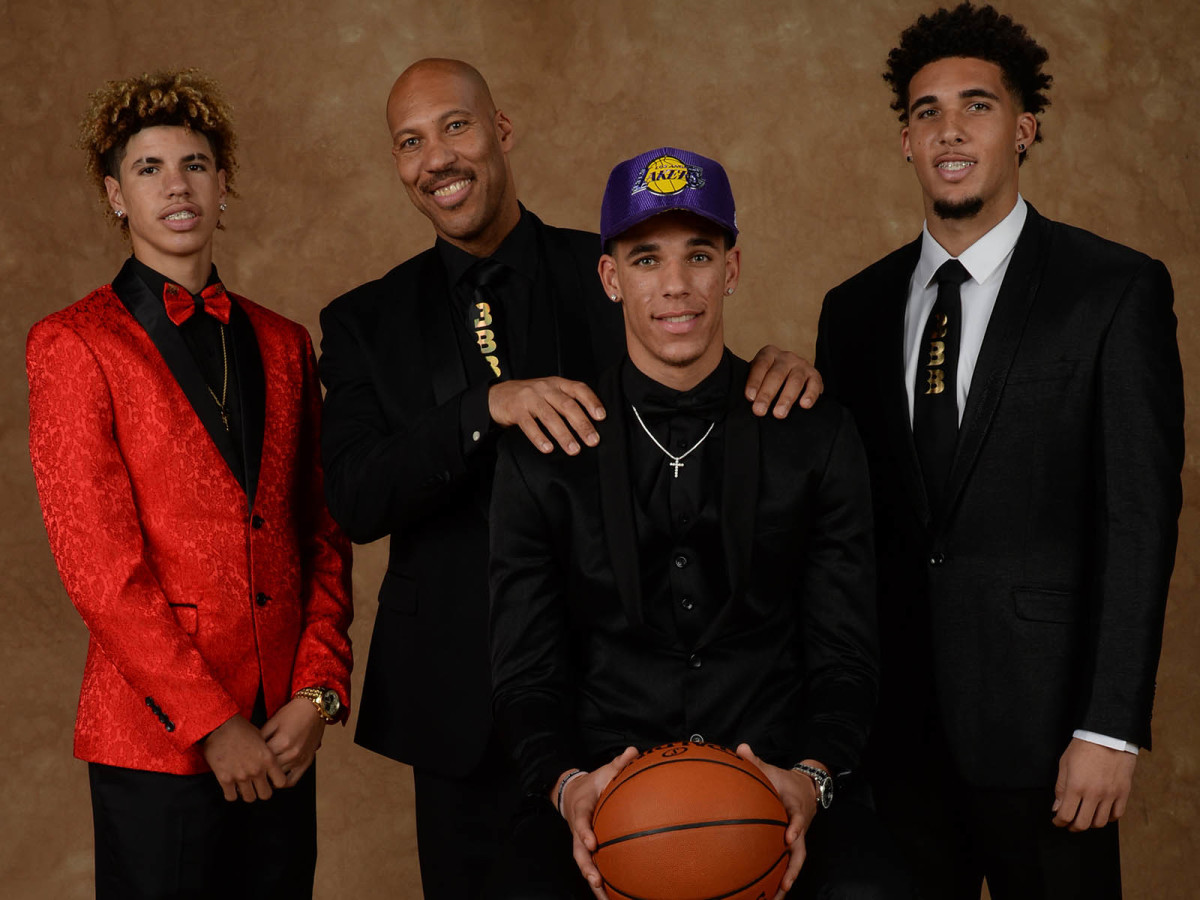
Lonzo has always preferred driving left. LaVar would pin his oldest’s pre-teen AAU club against high school varsity outfits, where opponents clamped down on the point guard’s right hand. He always had a vicious crossover. But getting past kids six years older proved nearly impossible. “They were bigger, faster, stronger,” Lonzo says. His shooting pocket migrated to his left hip, parlaying the space his dribbles carved away from defenders into rainbow triples.
With his right paw, he began raising the ball up his left side. “It just naturally got over there,” Lonzo says. He loads shots on his left shoulder, before his right elbow rotates in towards his chest and that wrist somehow snaps into an aligned release. “He has a regular follow through,” LiAngelo attests. Lonzo staggers his feet, as well, often positioning his right foot several inches in front of his left. As he bends his knees, his body almost rocks backward like a swing dancer. You can nearly see the energy flowing from the hardwood, up his torso and pouring into the flick of his wrist. “Until it doesn’t go in,” says former UCLA teammate and Indiana Pacers rookie T.J. Leaf. “I don’t have a problem with it.”
Throughout Lonzo’s freshman season—in which he drained 41.2% of his triples—his Bruins teammates would, unsuccessfully, try to emulate the wonky mechanics. The shot proved impossible to duplicate, but they understood its weaponry. Lonzo’s range broke opposing team’s schemes. “It was a lethal part of our offense,” says UCLA head coach Steve Alford. Through necessity and audacity, Lonzo began launching from 40 feet in those AAU battles. No one has ever regularly shot from that distance with such… disinterest. Not even Stephen Curry. Pulling up from so deep can freeze entire defenses. Opponents grow dizzy debating whether to lunge and close out or sit back and pray he misses. “That’s not an easy thing to prepare for,” Alford says.
On Rollercoaster Opening Night, Rockets Eclipse Celtics as NBA's Most Intriguing Team
Dylan Ennis was not primed on Feb. 9. He parked his right heel on the three-point line as Lonzo milked the clock down to 36 seconds, No. 10 UCLA nursing a 77-75 lead over No. 5 Oregon. Ennis foolishly gave Ball two yards of space. You can allow most college opponents to chuck from 25 feet. You cannot let Lonzo fire from 30. “That’s definitely different for them just because it’s so far out,” he says. He’s been shooting from that distance since he was 12. “For me, it’s just a normal shot.” He iced Ennis with that right-to-left crossover, and stranded the defender with a step-back. Ennis could only lunge at Lonzo as he watched his game-clinching bomb pierce the net. It’s a shot he drills with shocking regularity.
Lonzo’s presence in the league may provide another sharp inflection point in shooting history, 80 years after Sailors stunned the MSG crowd. Offenses have migrated further and further from the hoop as this decade has unfolded. The deeper a shooting threat teams can pose, the wider range a defense must scramble to prevent shots.
Lonzo can shepherd an era where defenses must chase shooters beginning at half court. During the 2016-17 season, Curry drained 38% of his 100 attempts between 28 and 43 feet, per basketball-reference. Only Damian Lillard and Ryan Anderson launched 40 or more shots from that distance. Lonzo drilled 4 of 6 tries in 36 games at UCLA, according data provided by Synergy Sports. It’s an admittedly small sample size, yet an incredible snapshot of his remarkable accuracy from such range.
His unique mechanics seem to enable that sniping. And perhaps the gall to fire from so deep may be the only evidence the soft-spoken Lonzo inherited at least a fraction of LaVar’s cheekiness. Regardless, the anecdotal history of shooting and decades of kinetic research show he will rain threes for many years in the NBA, so long as he launches ample looks within head coach Luke Walton’s scheme. “I like when it goes in,” Ball smiles. When optimal backspin rolls the ball through iron, perpetuating a century of evolution. And science proves it will translate to the NBA.
